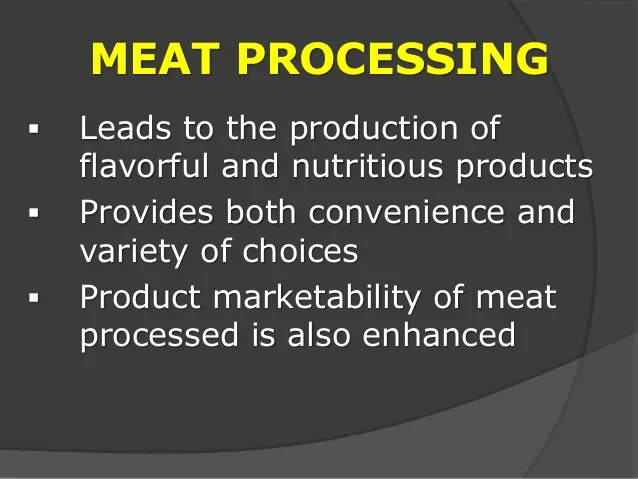High-Stakes Questions Deciding to go meat-free is a major lifestyle change. Before taking the plunge, consider these critical questions to ensure long-term health, nutrition, and sustainability.
Question 1: Can Your Diet Meet Your Nutritional Needs?
Before eliminating meat, assess whether your diet can provide essential nutrients like vitamin B12, iron, zinc, and omega-3 fatty acids. Plant-based diets require careful planning to avoid deficiencies. Consider consulting a dietitian or using fortified foods and supplements.
For more information, visit Healthline on Vegan Diets.
Question 2: Are You Ready for Social and Cultural Challenges?
Eliminating meat can impact social life, family meals, and cultural traditions. Urban centers like New York, Chicago, and Los Angeles offer many vegetarian-friendly restaurants, but navigating social gatherings still requires planning.
Explore local vegetarian options here: HappyCow – U.S. Vegetarian Restaurants.

Question 3: Can You Afford the Lifestyle Transition?
Plant-based diets may increase grocery bills if relying on organic, specialty, or imported products. Urban residents in cities like San Francisco and Boston should budget carefully to maintain a nutritionally complete vegetarian or vegan diet.
Check affordable options here: Eat This – Affordable Vegan Foods.
Question 4: Are You Prepared for Health Monitoring?
Transitioning to a meat-free diet may require periodic blood tests to monitor iron, B12, and other nutrient levels. Regular check-ups can prevent deficiencies and ensure long-term health. Tools like food tracking apps can help manage intake efficiently.
Learn more about monitoring your diet: Mayo Clinic on Vegan Diet Monitoring.
Question 5: How Will This Impact Your Environmental Footprint?
Reducing meat consumption can significantly lower your carbon footprint and water usage. Cities like Portland, OR, and Austin, TX, are examples of urban areas where plant-based eating aligns with sustainability efforts. However, balance is key—overconsumption of processed plant-based foods can counter environmental benefits.
Explore interactive environmental maps: Global Footprint Network.
Map: Vegetarian-Friendly Cities in the U.S.
Use this map to explore vegetarian-friendly cities with abundant plant-based options: https://www.google.com/maps/d/u/0/embed?mid=1XvH5w0C1FjKp9k7cCk2aYPlrAxo
Learn more about balancing plant-based diets and meat alternatives at ihoxi.xyz Nutrition Guides.
Understanding Your Protein Sources
Protein is one of the most common concerns when cutting out meat. Plant-based sources like lentils, beans, tofu, tempeh, and quinoa can provide sufficient protein, but they often require careful planning to meet daily needs. Incorporating a variety of protein-rich foods ensures balanced amino acid intake, supporting muscle repair and overall health.
Evaluating Vitamin B12 Intake
Vitamin B12 is predominantly found in animal products, making supplementation or fortified foods essential for meat-free diets. Without proper B12 intake, individuals may experience fatigue, neurological issues, and anemia. Consulting with a healthcare professional for monitoring and supplementation is recommended before making permanent dietary changes.
Iron Absorption Considerations
Plant-based iron, found in beans, spinach, and fortified cereals, is less readily absorbed than heme iron from meat. Pairing iron-rich foods with vitamin C sources, such as citrus or bell peppers, can enhance absorption. Understanding these nuances is crucial to preventing iron deficiency after eliminating meat.
Omega-3 Fatty Acids and Brain Health
Meat and fish provide essential omega-3 fatty acids critical for cognitive function and heart health. Plant-based sources like chia seeds, flaxseeds, walnuts, and algae supplements can fill the gap. Individuals considering a meat-free lifestyle must plan to ensure adequate omega-3 intake for long-term neurological well-being.
Digestive Health Adjustments
Transitioning to a plant-based diet can initially cause digestive changes due to higher fiber intake. Increased consumption of legumes, whole grains, and vegetables may lead to bloating or gas if introduced too quickly. Gradual changes and proper hydration help the digestive system adjust smoothly.
Financial Implications of Going Meat-Free
Switching to a vegetarian or vegan diet may increase grocery bills if relying on specialty products, imported ingredients, or organic items. However, staples like beans, rice, lentils, and seasonal vegetables can provide affordable protein and nutrients, making the transition cost-effective with proper planning.
Meal Planning for Long-Term Success
Eliminating meat requires strategic meal planning to ensure balanced nutrition, variety, and taste. Creating weekly meal schedules, prepping in advance, and experimenting with diverse cuisines can prevent dietary monotony and improve adherence to a meat-free lifestyle.
Impact on Social Gatherings
Social interactions often revolve around shared meals, many of which include meat. Being prepared with vegetarian-friendly dishes, communicating dietary preferences in advance, and seeking restaurants with diverse menus can minimize social friction and ensure enjoyable experiences.
Emotional and Psychological Considerations
For many, food is tied to comfort and emotional well-being. Removing meat entirely can trigger cravings or stress-related eating patterns. Developing mindful eating habits and exploring plant-based comfort foods can help manage emotional responses during the transition.
Global and Environmental Impacts
Reducing meat consumption contributes to lower greenhouse gas emissions, water savings, and decreased land use for livestock farming. Understanding the broader environmental impact can motivate adherence to plant-based diets and reinforce ethical considerations in personal food choices.
Exploring Cultural and Regional Alternatives
Many cultures offer traditional vegetarian dishes that are nutritionally balanced and flavorful. Exploring regional cuisines, such as Mediterranean, Indian, or East Asian plant-based options, can enhance variety and enjoyment while maintaining essential nutrient intake.
Monitoring Nutrient Status Over Time
Long-term meat elimination requires ongoing health monitoring. Regular blood tests for iron, B12, vitamin D, and omega-3 levels ensure deficiencies are detected early. Adjusting diet or supplements based on results prevents potential health complications.
Incorporating Meat Substitutes Wisely
Processed plant-based meat alternatives can provide familiar textures and flavors but may be high in sodium, preservatives, or refined ingredients. Using these products occasionally while focusing on whole-food sources is recommended for a balanced and healthy meat-free diet.
Adapting to Family and Household Dynamics
Transitioning to a meat-free lifestyle in households with mixed dietary preferences can be challenging. Meal planning, communication, and offering diverse options help accommodate everyone’s needs while maintaining personal dietary choices.
Traveling and Eating Out Without Meat
Traveling often limits vegetarian options, especially in rural or less-urbanized areas. Researching restaurants, packing snacks, and identifying grocery stores with plant-based options can ensure consistent adherence to a meat-free diet during travel.
Understanding Complete Proteins in Plant-Based Diets
Some plant proteins are incomplete, lacking certain essential amino acids. Combining different plant-based sources—like rice and beans or hummus with whole-grain pita—ensures you get all necessary amino acids. Understanding how to balance these combinations is critical for muscle health and overall energy levels.
Strategies for Maintaining Iron Levels
Vegetarians often struggle with non-heme iron absorption. Pairing iron-rich foods like spinach, lentils, or pumpkin seeds with vitamin C sources can dramatically improve absorption. Monitoring iron status through regular blood tests ensures you avoid fatigue and anemia.
Managing Calcium Intake Without Dairy
Eliminating meat and dairy may reduce calcium intake, which is vital for bone health. Fortified plant milks, almonds, tofu made with calcium sulfate, and leafy greens like kale provide excellent alternatives. Long-term planning is essential to prevent bone density loss, particularly in older adults.
Vitamin D and Sunlight Exposure
Vitamin D is critical for immune and bone health, and meat-free diets can reduce dietary sources. Sunlight exposure, fortified plant milks, and supplements are important considerations, especially in cities with limited sunlight or during winter months.
Optimizing Fiber Intake
Plant-based diets are high in fiber, which supports gut health and cardiovascular function. However, suddenly increasing fiber can cause bloating or digestive discomfort. Gradual incorporation of beans, whole grains, and vegetables, combined with adequate hydration, is recommended for a smooth transition.
Balancing Omega-3 and Omega-6 Fatty Acids
Plant-based diets often include more omega-6 than omega-3 fatty acids, potentially increasing inflammation. Consuming flaxseeds, chia seeds, walnuts, or algae-based supplements can help maintain an optimal omega-3 to omega-6 ratio for heart and brain health.
Managing Blood Sugar with Plant-Based Foods
Replacing meat with high-carbohydrate plant foods can affect blood sugar. Choosing whole grains, legumes, and low-glycemic vegetables helps regulate glucose levels. Monitoring blood sugar is especially important for individuals with diabetes or prediabetes before fully eliminating meat.
Understanding Iodine Sources
Meat and dairy are common iodine sources, essential for thyroid function. Seaweed, iodized salt, and certain fortified plant-based foods can provide iodine in a vegetarian diet. Ignoring iodine intake may lead to thyroid imbalances over time.
Monitoring Zinc and Trace Minerals
Zinc, selenium, and other trace minerals are crucial for immune function. Meat elimination may reduce intake, so vegetarians should include pumpkin seeds, lentils, whole grains, and nuts to maintain proper levels. Supplements may be considered under medical guidance.
Meal Variety and Food Enjoyment
One challenge of cutting meat permanently is keeping meals satisfying. Exploring ethnic cuisines, plant-based proteins, diverse grains, and vegetables ensures variety and prevents boredom, making adherence to a meat-free diet easier over time.
Impact on Mental Health and Mood
Diet influences mood, and eliminating meat without planning can lead to nutrient gaps affecting mental health. Ensuring adequate B12, iron, and omega-3s helps maintain energy, focus, and emotional stability, particularly for students and professionals in high-stress urban environments.
Food Label Literacy
Understanding nutrition labels is critical when transitioning to a meat-free diet. Hidden animal-derived ingredients, excessive sodium, and unhealthy additives in processed plant-based products can compromise health. Developing label-reading skills is essential for safe and balanced eating.
Creating Sustainable Grocery Habits
Shopping strategically ensures nutrient adequacy and cost-effectiveness. Prioritizing seasonal produce, bulk legumes, whole grains, and minimally processed items allows for sustainable plant-based eating while minimizing reliance on expensive substitutes.
Hydration and Electrolyte Balance
Plant-based diets increase fiber intake, which requires adequate hydration. Ensuring sufficient water, and including potassium-rich foods like bananas, spinach, and avocados, helps maintain electrolyte balance and prevents digestive discomfort.
Exploring Fermented Foods for Gut Health
Fermented foods like tempeh, miso, sauerkraut, and kimchi provide probiotics that support digestive health. Including these foods in a meat-free diet helps improve nutrient absorption and maintains a healthy gut microbiome, especially when eliminating animal-based foods.

Incorporating Legumes for Balanced Nutrition
Legumes such as lentils, chickpeas, and black beans are critical in a meat-free diet for protein, fiber, and micronutrients. Proper preparation, like soaking and cooking thoroughly, improves digestibility and nutrient absorption. Combining legumes with whole grains can create complete proteins for sustained energy throughout the day.
Exploring Whole Grains for Energy
Whole grains like quinoa, brown rice, oats, and barley provide complex carbohydrates, fiber, and essential minerals. They stabilize blood sugar levels and promote satiety, making them essential staples in a long-term vegetarian or vegan diet. Incorporating a variety of grains prevents monotony and ensures nutrient diversity.
Incorporating Nuts and Seeds
Nuts and seeds, including almonds, chia, flax, and walnuts, provide healthy fats, protein, and micronutrients such as magnesium and vitamin E. Including these foods daily supports cardiovascular health and helps meet essential fatty acid requirements, which are especially important when eliminating meat.
Cooking Techniques for Flavor and Nutrition
Transitioning to a meat-free diet often requires learning new cooking techniques to enhance flavor and maintain nutrient density. Roasting, steaming, sautéing, and seasoning plant-based proteins creatively improves taste, encourages adherence, and ensures meals are satisfying and nutritious.
Exploring Plant-Based Dairy Alternatives
Fortified plant-based milks, yogurts, and cheeses can replace traditional dairy while providing calcium, vitamin D, and protein. Choosing unsweetened and fortified options ensures nutrient intake is maintained without excessive added sugars, supporting bone health in a meat-free lifestyle.
High-Stakes Questions for Nutritional Planning
Before fully eliminating meat from your diet, asking High-Stakes Questions about nutritional planning is crucial. High-Stakes Questions ensure you consider protein intake, essential vitamins, and mineral balance. By addressing High-Stakes Questions proactively, you reduce the risk of deficiencies and maintain long-term health. Every High-Stakes Question you ask provides guidance for building a sustainable, nutrient-rich meat-free diet.
High-Stakes Questions for Lifestyle and Social Adaptation
High-Stakes Questions also apply to lifestyle and social adaptation when going meat-free. High-Stakes Questions help anticipate challenges at family gatherings, social events, and dining out. Considering High-Stakes Questions allows you to plan meals, communicate preferences, and stay consistent with your diet. Using High-Stakes Questions effectively ensures a smooth transition while maintaining social and cultural harmony.
Using Herbs and Spices for Nutrient Boosts
Herbs and spices not only enhance flavor but also provide antioxidants and anti-inflammatory compounds. Turmeric, ginger, garlic, and cinnamon can complement plant-based meals, supporting overall health while keeping meat-free dishes flavorful and satisfying.
Meal Prepping for Consistency
Preparing meals in advance ensures nutrient balance and prevents reliance on convenient but less nutritious options. Batch-cooking grains, legumes, and vegetables creates ready-to-eat meals, reducing the likelihood of reverting to meat-based convenience foods due to time constraints.
Understanding Plant-Based Protein Powders
Protein powders derived from pea, hemp, or rice can supplement a vegetarian diet, especially for athletes or those with higher protein needs. Understanding dosage, amino acid content, and combining sources ensures optimal nutrient intake without overreliance on processed supplements.
Maintaining Fiber Balance
Plant-based diets increase fiber intake, which supports gut health, lowers cholesterol, and promotes satiety. Gradual incorporation of high-fiber foods prevents digestive discomfort, while water intake and fermented foods help maintain a healthy gut microbiome.
Understanding Iodine and Thyroid Health
Eliminating meat can reduce dietary iodine, affecting thyroid function. Seaweed, iodized salt, and fortified foods are important to prevent deficiencies. Monitoring thyroid health ensures that long-term meat-free diets do not negatively impact metabolism and energy levels.
Meal Planning for Families
Households with mixed dietary preferences require careful planning. Preparing versatile meals with separate protein options and balanced side dishes ensures everyone is satisfied while allowing a member to maintain a meat-free diet successfully.
Adapting Traditional Recipes
Converting traditional meat-based recipes to vegetarian alternatives allows continuity in cultural and family meals. Using tofu, tempeh, or legumes as substitutes can preserve flavors and textures while meeting nutritional needs and keeping meals familiar and satisfying.
Exploring Global Plant-Based Cuisines
International cuisines offer diverse plant-based dishes that can enrich a meat-free diet. Indian, Mediterranean, Middle Eastern, and East Asian cuisines provide flavorful, nutritionally complete vegetarian options that prevent dietary monotony and encourage adherence.
Understanding the Role of Fortified Foods
Fortified plant-based foods provide essential vitamins and minerals that may be lacking in meat-free diets, such as B12, vitamin D, and calcium. Incorporating these foods strategically ensures long-term nutrient sufficiency without relying solely on supplements.
Tracking Nutritional Intake
Using apps or journals to track nutrients like protein, iron, B12, calcium, and omega-3s helps maintain a balanced meat-free diet. Regular tracking can reveal deficiencies early and guide adjustments to food choices and supplementation, ensuring sustained health.
Frequently Asked Questions (FAQ)
1. What are the most important High-Stakes Questions to ask before going meat-free?
High-Stakes Questions focus on nutrition, social challenges, health monitoring, and environmental impacts to ensure a successful and sustainable transition to a meat-free diet.
2. Why should I consider High-Stakes Questions about nutrient intake?
High-Stakes Questions about nutrient intake help ensure you get enough protein, iron, vitamin B12, calcium, and omega-3s when eliminating meat, preventing deficiencies and long-term health issues.
3. How do High-Stakes Questions address social challenges?
They help you anticipate and plan for social situations, family meals, and cultural events where meat is commonly served, reducing stress and maintaining consistency in your diet.
4. Are High-Stakes Questions relevant for beginners?
Yes, High-Stakes Questions provide a roadmap for those new to plant-based diets, helping them navigate potential pitfalls and make informed dietary decisions from the start.
5. How can High-Stakes Questions help with budgeting?
They guide planning for affordable, nutrient-rich plant-based meals while minimizing reliance on expensive processed meat alternatives and specialty products.
6. Do High-Stakes Questions consider long-term health?
Yes, these questions address nutrient sufficiency, supplementation, and monitoring to prevent deficiencies in B12, iron, calcium, and other critical nutrients over time.
7. How do High-Stakes Questions impact environmental awareness?
They help you understand the environmental implications of reducing meat consumption, including carbon footprint, water usage, and sustainable food choices.
8. Can High-Stakes Questions prevent digestive issues?
Yes, asking High-Stakes Questions about fiber intake, gradual dietary changes, and hydration can help minimize digestive discomfort when transitioning to a plant-based diet.
9. Are High-Stakes Questions necessary for athletes?
Athletes benefit from High-Stakes Questions focused on protein, amino acids, and energy balance to ensure performance is not compromised when eliminating meat.
10. How do High-Stakes Questions help with meal planning?
They guide the creation of balanced, varied, and flavorful meals that meet nutritional needs, prevent monotony, and support long-term adherence to a meat-free lifestyle.
11. Do High-Stakes Questions address supplementation?
Yes, they highlight the need for vitamin B12, vitamin D, iodine, and omega-3 supplements when necessary, ensuring nutrient sufficiency in a meat-free diet.
12. Can High-Stakes Questions improve family meal dynamics?
They help families plan inclusive meals that accommodate both vegetarian and non-vegetarian preferences, reducing conflicts and maintaining harmony at the table.
13. How do High-Stakes Questions relate to travel?
High-Stakes Questions guide preparation for traveling while meat-free, including researching restaurants, packing snacks, and identifying grocery stores with plant-based options.
14. Are High-Stakes Questions important for mental health?
Yes, they ensure adequate intake of nutrients that support mood and cognitive function, reducing stress and emotional challenges during dietary transitions.

15. How do High-Stakes Questions address cravings?
They help identify nutrient gaps or emotional triggers for cravings, offering strategies like plant-based comfort foods and mindful eating to manage them effectively.
16. Can High-Stakes Questions help prevent dietary deficiencies?
Absolutely, they highlight key nutrients to monitor and suggest fortified foods or supplements to prevent deficiencies common in meat-free diets.
17. How do High-Stakes Questions influence grocery shopping?
They provide guidance on selecting nutrient-dense, affordable, and convenient plant-based foods while avoiding overly processed options.
18. Are High-Stakes Questions useful for long-term adherence?
Yes, they help identify potential pitfalls, plan meals, monitor health, and maintain motivation, increasing the likelihood of sustaining a meat-free lifestyle long-term.
19. Can High-Stakes Questions guide cultural adaptations?
They encourage exploring traditional vegetarian dishes from different cultures, adapting familiar recipes, and making plant-based eating enjoyable and diverse.
20. Why are High-Stakes Questions essential before eliminating meat?
They ensure informed decisions, balanced nutrition, social adaptability, and long-term health, minimizing risks and making the transition sustainable and successful.





